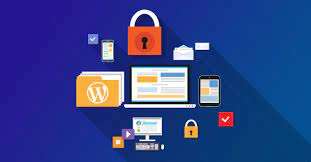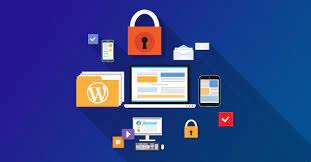WordPress, undoubtedly the most popular content management system (CMS) in the world, powers millions of websites across various industries. However, with great popularity comes the risk of being targeted by malicious actors. Securing your WordPress website is not just an option; it’s a necessity. In this article, we will explore essential tips and best practices to help you master WordPress security and keep your website safe from potential threats.

- Keep WordPress Core, Themes, and Plugins Updated:
Regular updates are crucial for maintaining the security of your WordPress site. Developers often release updates to address vulnerabilities and enhance security features. Ensure that your WordPress core, themes, and plugins are always up to date. Enable automatic updates whenever possible to stay protected against the latest security threats. - Use Strong Authentication:
Strengthen your login credentials by using a combination of uppercase and lowercase letters, numbers, and special characters. Avoid using easily guessable passwords and consider implementing two-factor authentication (2FA) for an additional layer of security. This extra step significantly reduces the risk of unauthorized access to your WordPress dashboard. - Secure Your Login Page:
Limit access to your login page by customizing the default login URL. This can be achieved through plugins that allow you to change the login URL to something unique, making it harder for attackers to target your login page directly. Additionally, consider restricting login attempts to prevent brute force attacks. - Implement Secure Sockets Layer (SSL) Encryption:
SSL encryption is vital for securing data transmission between your website and its visitors. It not only enhances security but also boosts your site’s credibility. Ensure that your website has an SSL certificate installed, and configure your WordPress settings to force the use of HTTPS. - Regular Backups:
In the event of a security breach or data loss, having recent backups is a lifesaver. Schedule regular backups of your WordPress site, including its database and files. Numerous plugins simplify the backup process, allowing you to automate this critical task. - Limit User Permissions:
Assign appropriate roles and permissions to users, giving them only the access they need. Avoid using the administrator account for routine tasks. By limiting user permissions, you reduce the potential impact of a compromised account on your website’s overall security. - Install a WordPress Security Plugin:
Consider using a dedicated security plugin to fortify your website. These plugins offer features such as malware scanning, firewall protection, and real-time threat detection. Popular options include Wordfence, Sucuri Security, and iThemes Security. - Monitor and Audit User Activity:
Keep track of user activity on your WordPress site by monitoring login attempts, changes to critical settings, and content modifications. Plugins like WP Security Audit Log can provide detailed logs, helping you identify and address security issues promptly. - Protect Against SQL Injection and Cross-Site Scripting (XSS) Attacks:
Implement security measures to defend against common web vulnerabilities, such as SQL injection and XSS attacks. Utilize input validation, parameterized queries, and web application firewalls to safeguard your site against these threats. - Regular Security Audits:
Conduct periodic security audits to assess the overall health of your website’s security. This includes checking for outdated plugins, weak passwords, and other potential vulnerabilities. Address any issues promptly to maintain a robust security posture.
Conclusion:
Mastering WordPress security is an ongoing process that requires diligence and proactive measures. By following these tips and best practices, you can significantly reduce the risk of security breaches and ensure a safe online experience for both you and your website visitors. Stay vigilant, stay informed, and make security a top priority in your WordPress journey.



